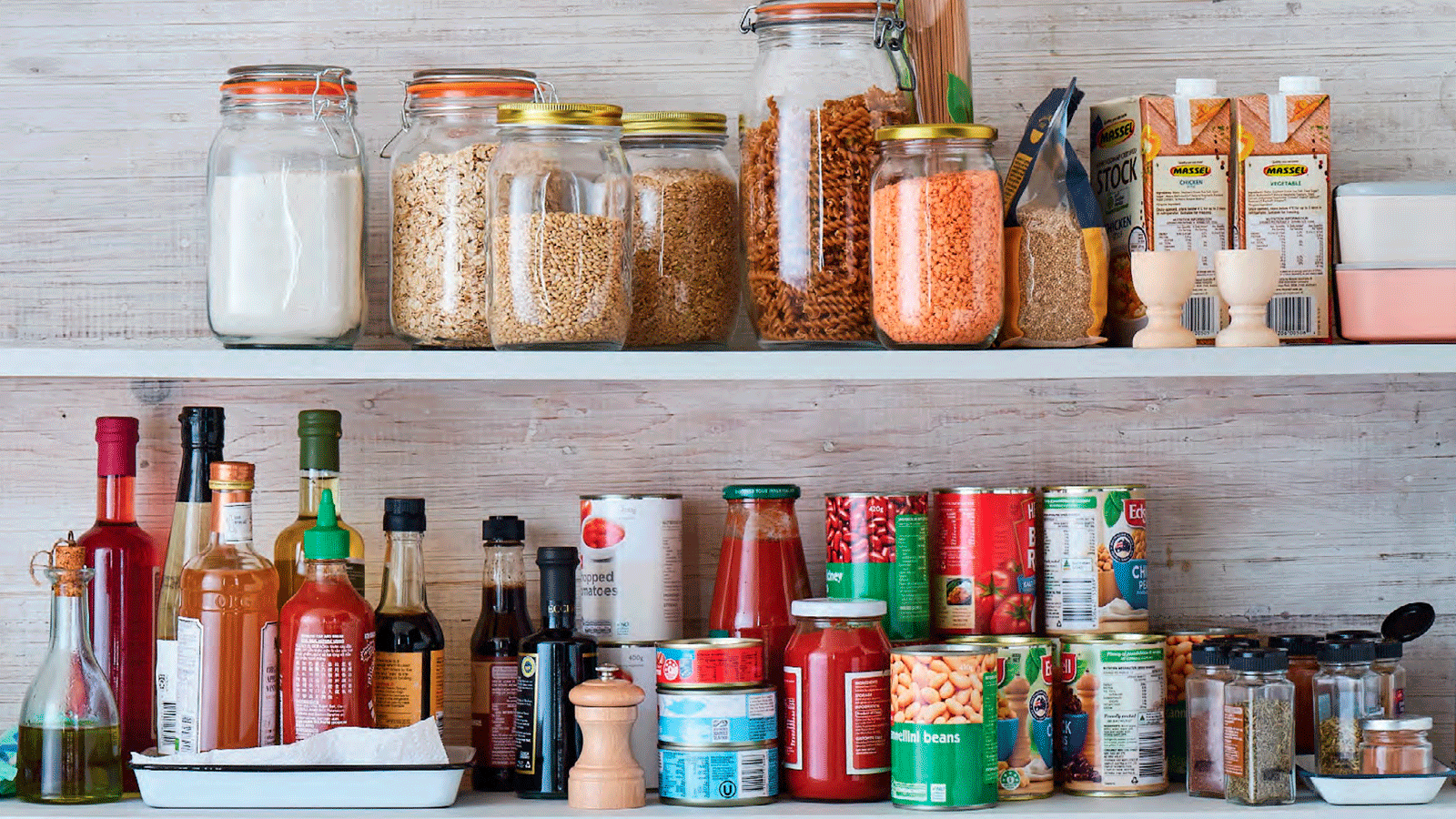How to organise a healthy pantry


What should be in a healthy pantry?
A well-organised pantry makes finding ingredients simple (so cooking is more enjoyable), cuts down on food waste (goodbye stale, half-used packets) and makes it easier to know when you need to stock up (no more last minute takeaway because you forgot to replenish a vital ingredient).
Start your clean out
Let’s start by taking everything out of your pantry and discarding anything that’s past its use-by date or looking (or smelling!) a bit dodgy. If you find perfectly good food that you just don’t need, consider donating them to a neighbour or charity.
Next, wipe down the shelves with warm soapy water (a vacuum is great for crumbs in crevices). Start grouping like things together on the bench (think cans with cans, bottles with bottles, etc).
Top shelf
Best for treats, specialty items and alcohol
- Keeping treats where they are harder to see (and reach) makes them less of a temptation. But if those chocolate biscuits are still calling your name, put them in a tub or opaque container.
- Specialty items that you don’t use very often, such as cake-decorating supplies and equipment, can be archived up here in dedicated containers so they don’t take away space from everyday ingredients.
- The top shelf is also a good place for keeping cooking alcohol out of the reach of children and storing light bulky items, such as paper towels and party supplies.
Second shelf
Best for dry goods (baking ingredients, grains, dried legumes, herbs, spices etc)
- Transfer dry ingredients, such as pasta, rice, quinoa and dried legumes, into clear, similar-sized, airtight containers. This keeps out weevils and moisture, makes them easier to stack and helps you see if you are running low.
- All the bits you need for baking (sugar, vanilla essence, cocoa, etc) come in a range of shapes and sizes, so store them together in stackable containers so they take up less room and are easy to locate.
- Herbs and spices are best stored in the pantry as too much heat and light will affect the flavour. If you have a messy jumble of packets and jars, invest in a spice rack or container to keep them neat and tidy.
Third shelf
Best for cans, bottles and Tetra packs (canned veggies, sauces, liquid stock etc)
- Stacking cans saves space but it’s always hard to see the ones at the back. One solution is to buy (or make) tiers designed to elevate the back row. It also helps to separate your cans into sub-groups, such as legumes (beans), ready-made soups, tomato products, canned fish and fruit.
- Bottles have a habit of toppling over (and always seem to have a loose lid when they do!). Prevent this by storing oils, sauces and vinegars in baskets or pantry caddies lined with paper towel (to catch any drips).
- Tetra packs of liquid stock, long-life milk and soup are easy to stack but tiered stands (like the one for cans) make life that little bit easier.
Fourth shelf
Best for snacks and breakfast needs (cereal, spreads, bread, tea & coffee etc)
- Place a selection of healthy snacks below your direct eyesight so you are not tempted every time you go to the pantry but they are accessible when you need them. If you share your snacks with kids, pull-out baskets make it easy for them to grab and go (without causing pantry mayhem).
- Want the kids to get their own breakfast? Then store the cereal at kid height! It is easier to tell when supplies are running low if you transfer them into clear containers.
- If everyone in your family wants a different spread on their toast, store the honey, peanut butter and Vegemite together in one plastic basket that you can pull out of the pantry (and put back) with ease.
Bottom shelf
Best for potatoes & onions, drink bottles, bulky/ heavy items
- To stop onions from sprouting and potatoes from turning green, they need to be stored, separately, in a cool, dark place in well-ventilated baskets. Don’t store them together as they will reduce each other’s shelf-life.
- A large tub with wheels makes it easier to access heavy items at the back (such as large bottles of mineral water) without getting on your knees.
- If you like to buy in bulk, store extra items in a plastic tub until you need them.
Top pantry tips
Label everything! A truckload of containers is useless if you don’t know what’s inside. Also cut out the use-by date and stick it inside the lid.
Attach a whiteboard or notepad inside the door so you can instantly jot down things you need to buy on your next trip to the supermarket.
